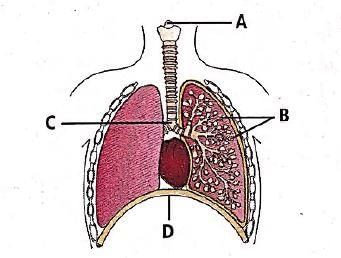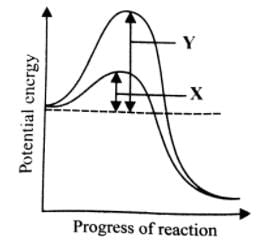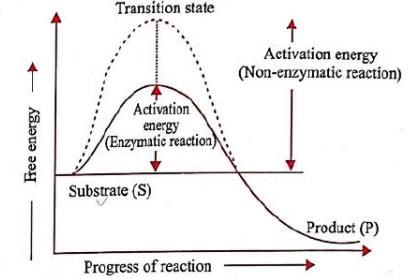SRMJEEE Biology Mock Test - 8 - JEE MCQ
30 Questions MCQ Test - SRMJEEE Biology Mock Test - 8
If N population density at time t, then population density at time t+1 can be written as
Nt +1=Nt +[(A+B)−(C+D)]
Select the correct option for A, B, C and D in the above equation.
Select the correct option for A, B, C and D in the above equation.
What are "sacred groves" in the context of biodiversity conservation?
Identify the human development stage shown below as well as the related right place of its occurrence in a normal pregnant woman and select the right option for the two, together




Which of the following is the stage of inactivation of cell cycle due to non-availability of mitogens and energy rich compounds?
Assertion (A): Red fibres in muscles have a high content of myoglobin, which contributes to their reddish appearance.
Reason (R): These fibres primarily rely on anaerobic metabolism for energy production.
Which of the following statements about the classification systems in botany is/are correct?
i. The artificial systems of classification used superficial morphological characteristics for classifying plants.
ii. Natural classification systems consider only external features of plants.
iii. Phylogenetic classification systems are based on evolutionary relationships and assume a common ancestor among organisms.
iv. Numerical Taxonomy incorporates chemical constituents only for classification purposes.
What does a dot on the top of a floral diagram represent?
In a pond, last year there were 30 lotus plants. Through reproduction, 25 new lotus plants were added in one year while 8 plants died. The birth and death rates for the lotus population respectively are ___ and ____ individuals per lotus per year.
The given figure shows the diagrammatic view of human respiratory system. Identify A, B, C and D.

A typical angiospemic embryo sac is though 8 nucleate is 7-celled. 8 nuclei includes______.
Lungs are made up of air-filled sacs, the alveoli. They do not collapse even after forceful expiration, because of:
During urine formation, the tubular cells secrete ______________ into the filtrate.
Which of the following reactions is catalysed by the enzyme phosphofructokinase?
Which of the following statements is incorrect with regard to bilateral symmetry?
Which meristem is found at the tips of roots and shoots?
Consider the following statements regarding the reproductive structures of gymnosperms:
i. The male and female gametophytes have a free-living independent existence.
ii. Pollen grains in gymnosperms develop into a highly reduced male gametophyte.
iii. Male and female cones may be borne on the same or different plants depending on the species.
iv. Fertilization in gymnosperms involves the pollen tube discharging its contents near the archegonia mouth.
Choose the statements which are correct
Select the correct option to fill up the blanks.
(i) ___________are used in detergent formulations and are helpful in removing oily stains from the laundry.
(ii) _____________are ripened by growing Penicillium roqueforti on them.
(iii) ___________are produced without distillation whereas,__________are produced by distillation of the fermented broth.
(iv) ___________antibiotic was used to teat American soldiers wounded in world war II.
(v) _______is also called as Kusht rog.
Which of the following walls of microsporangium has more than one nucleus per cell?
Which part of the cockroach's digestive system is responsible for grinding food?
Reason (R): The ability to adapt to different water environments is due to the versatile nature of their chloroplasts.
Match the following :
Hormone
a) Follicle stimulating hormone
b) Luteinising hormone
c) Cortisol
d) Aldosterone
Target tissue/cell
i) liver
ii) kidney tubule
iii)sertoli cells
iv) interstitial cells
What type of hormone typically interacts with intracellular receptors?
Which of the following cells undergoes meiotic division?
a. Microspore mother cell
b. Megaspore mother cell
c. Sporogenous cells
d. Microspores
In a cross between a pure tall plant with green pod and a pure short plant with yellow pod. How many short plants are produced in F2 generation out of 16?
Which of the following statements about Gymnosperms are correct?
i. The seeds of gymnosperms are enclosed within fruits.
ii. Some gymnosperms form a symbiotic relationship with N2-fixing cyanobacteria.
iii. Gymnosperms produce two types of spores: microspores and megaspores.
iv. All gymnosperms have branched stems.
Which of the following divisions of plants does NOT have a well-differentiated body?






















